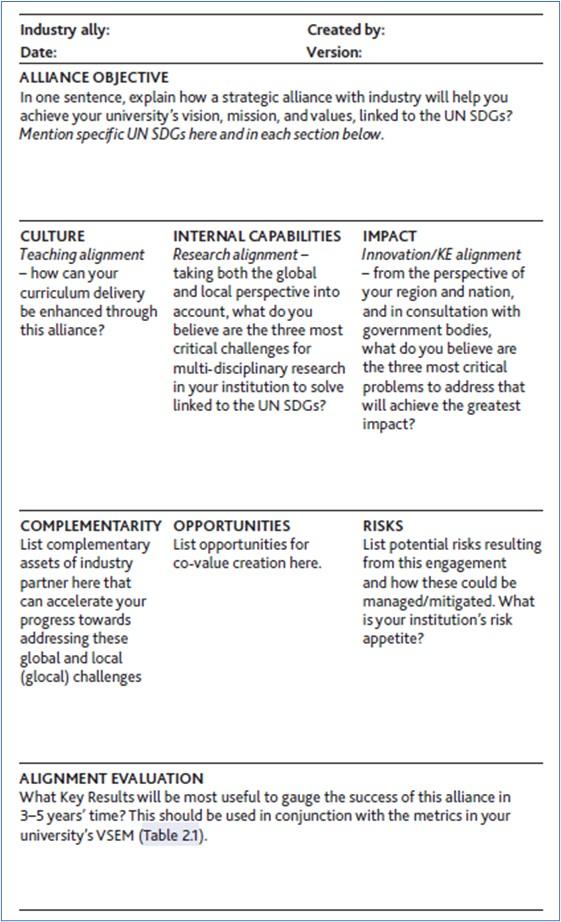A new type of global academia is emerging, embodied by what we call the “fifth-generation” university. Such universities integrate research, teaching and knowledge exchange for widespread societal benefit, underpinned by cross-sector strategic alliances.
These partnerships are vital for achieving the United Nations Sustainable Development Goals (UN SDGs) by 2030, while driving economic growth. The SDGs represent a $12 trillion (£8 trillion) global opportunity for sustainable business growth, according to a 2017 World Economic Forum and Accenture report. More recently, the US Federal Sustainability Plan has promised incentives to “green” companies focused on the net-zero carbon transition up to 2050.
Time is running out to achieve the 17 SDGs. At the UN General Assembly’s 77th Science Summit in September 2022, we argued for a novel approach to cross-sector collaboration to boost progress towards tackling these global challenges by 2030.
Although the pandemic and increasing geopolitical turbulence have hindered progress, universities can boost efforts towards meeting the SDGs by doing these two things:
- Improve capacity for building transformational cross-sector partnerships.
- Grow trans-disciplinary research and “team science”.
Here, we explain how this can be done through examples and tools that we have found useful.
1. Improve capacity for enabling and building transformational cross-sector partnerships
Cross-sector partnerships should seek to “bake in” transformation from the outset. We use an SDG canvas as a strategic planning tool to help all partners stay focused. This canvas enables universities and industry partners to consider what complementary assets they can leverage together to tackle complex challenges.
- Resource collection: Higher education and industry: how to work well together
- ‘Embrace messiness’: how to broker global partnerships to tackle the Sustainable Development Goals
- Resource collection: Universities’ role in the climate change battle
Our canvas tool (Figure 1 below) offers a planning matrix that uses the lens of the SDGs to map opportunities for building value against partner assets and the university’s strategic priorities. It enables universities to explore and envision potential trans-disciplinary research themes for an alliance, drawing on institutional strengths and industry domains. The canvas can also help to create vision-sharing documents to build internal support for the alliance.

Universities must consider the following questions alongside those in Figure 1 to move partnerships beyond transactional and short-term:
- Do the other cross-sector organisations share our vision and values?
- What capacity do these cross-sector organisations have to co-innovate and find tangible, appropriate and workable solutions to challenges such as tackling climate change, biodiversity loss and creating a zero-carbon circular economy?
- What opportunities are there for a novel approach that combines trans-disciplinary programmatic activities, such as joint research or executive education, with philanthropy, to build a long-term, challenge-focused strategic alliance?
2. Grow trans-disciplinary research and team science
Fifth-generation universities are marked by the ability to leverage trans-disciplinary research and a “team science” approach. Team science brings together insight from academics, professionals and knowledge exchange practitioners across sectors to address scientific challenges. They integrate expertise from across university departments and disciplines to drive creative problem solving and design thinking that accelerates transformative and translational research.
Forward-thinking universities should initiate Disrupt workshops to help identify opportunities across sector and disciplinary boundaries. The Disrupt tool is focused on achieving SDG 17, “partnerships for the goals”, which underpins all other SDGs. This tool should be used within a one-day multidisciplinary and multisector “sandpit” workshop. The session should start with an introduction from an institutional leader on the importance of the SDGs. There should be no more than 35 participants so that there are seven tables with up to five people per table, representing different academic disciplines, professional services teams and guests from industry, government and civil society.
Each table is given a large letter representing each of the categories within the word “disrupt”: digital; infrastructure; society; region; unique; possibilities; trends.
It is useful for each table to have a card with graphics summarising all 17 SDGs and a whiteboard. The groups discuss, explore and record their ideas about how the university can work across disciplines and sectors to achieve its mission. Discussions should relate to each table’s letter:
- Digital – consider how digital technologies are transforming the university internally and can bring transformation externally to wider society, through alliances that achieve the SDGs.
- Infrastructure – consider how your university infrastructure, campus facilities and built environment can provide opportunities for new alliances to address the SDGs.
- Society – consider how your university is seen in society and how it can form alliances to achieve gender equality and inclusive positive change for all.
- Region – consider how your university is currently contributing to achieving the SDGs in your region and how it can achieve more through alliances.
- Unique – consider what is unique about the university and how all the university’s assets can complement those from other sectors.
- Possibilities – set your mind free to explore the possibilities of new alliances between academic disciplines that have not worked together much before, as well as from across different sectors.
- Trends – consider the current political, economic, sociological, technological, legal and environmental trends that might enable new ways of working together.
Every 10 minutes, people rotate to another table so they cover all seven throughout the workshop. The tool facilitates conversations and uncovers interesting insights and perspectives from cross-sector stakeholders.
Training should be included, covering topics such as team science, human-centred design, systems thinking, the circular economy, storytelling, pitching, and inclusive, responsible and “frugal” innovation.
Teaching-focused universities could use the tool to find real-world case studies and possible student projects. Research-focused universities could use the tool to find partners for collaborative funding bids for government funding.
There are just seven years left to achieve the Global Goals by 2030. We need to work across governments, industry, civil society and academia through research and innovation ecosystems that span the whole planet to make the world a better place for our children and generations to come.
This advice is drawn from Tim Bodley-Scott and Ersel Oymak’s recently published book ‘University-Industry Partnerships for Positive Change: Transformational Strategic Alliances Towards UN SDGs’.
Tim Bodley-Scott is strategic alliances director and Ersel Oymak is strategic alliances adviser and innovator in residence, both at University College London.
If you found this interesting and want advice and insight from academics and university staff delivered direct to your inbox each week, sign up for the Campus newsletter.




comment